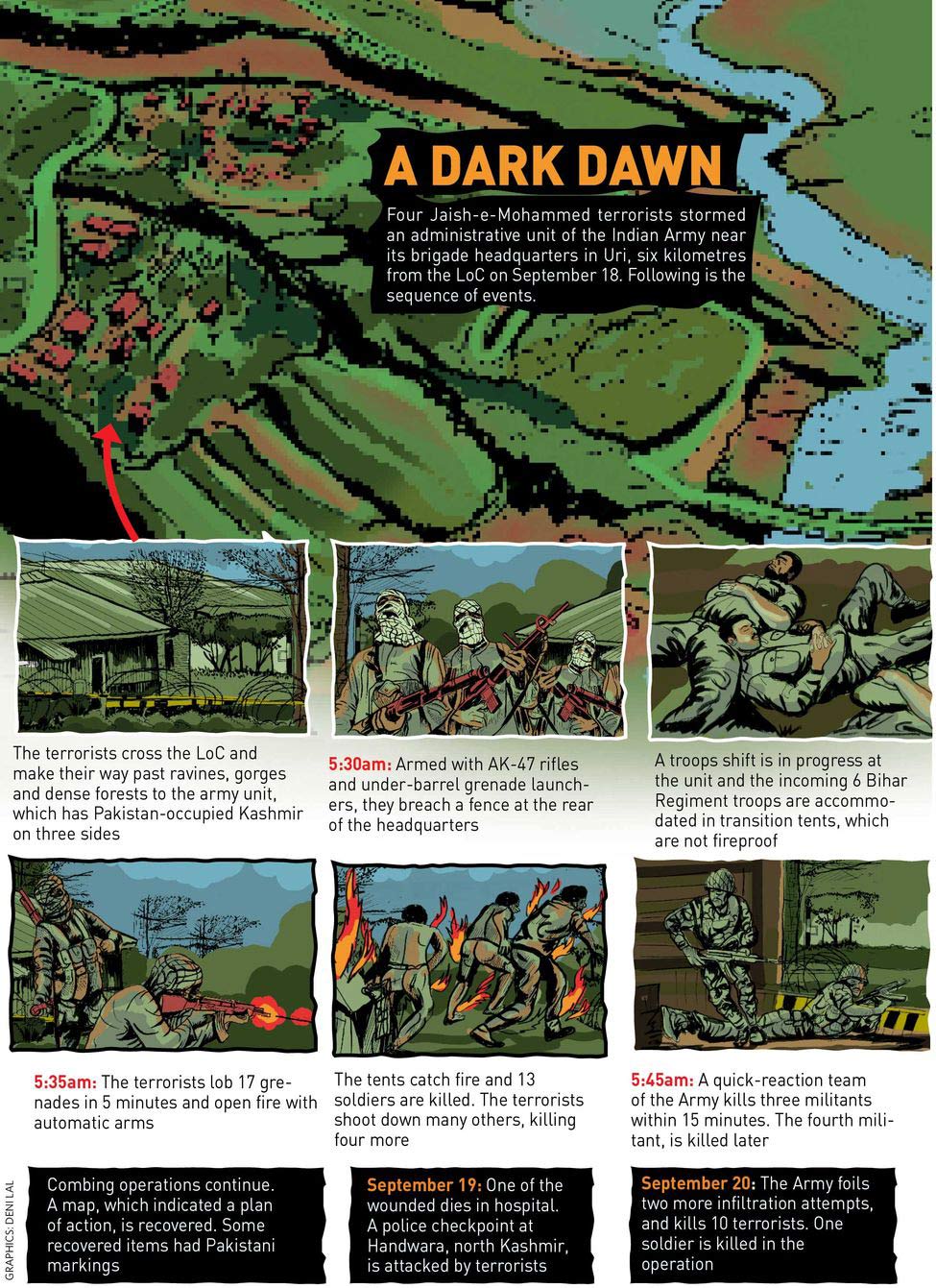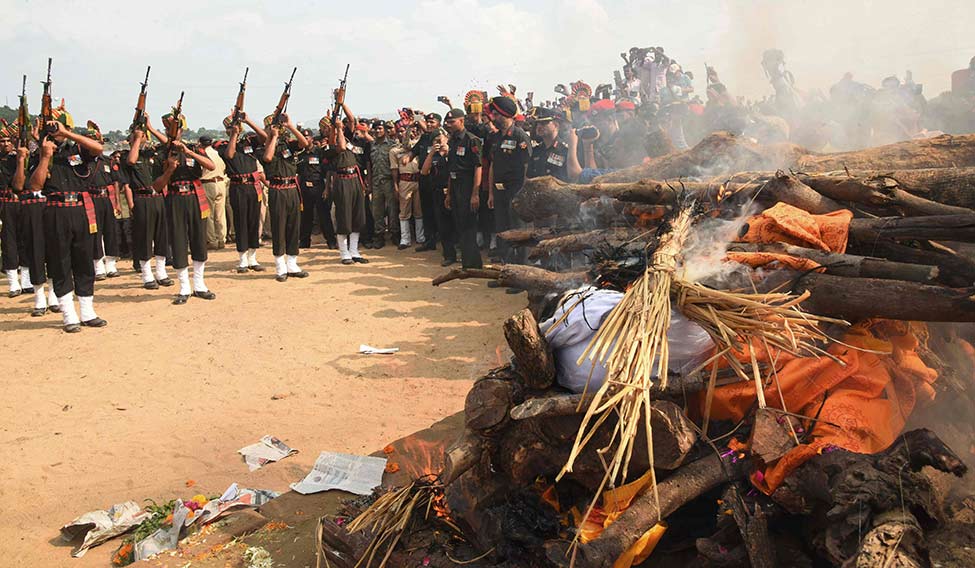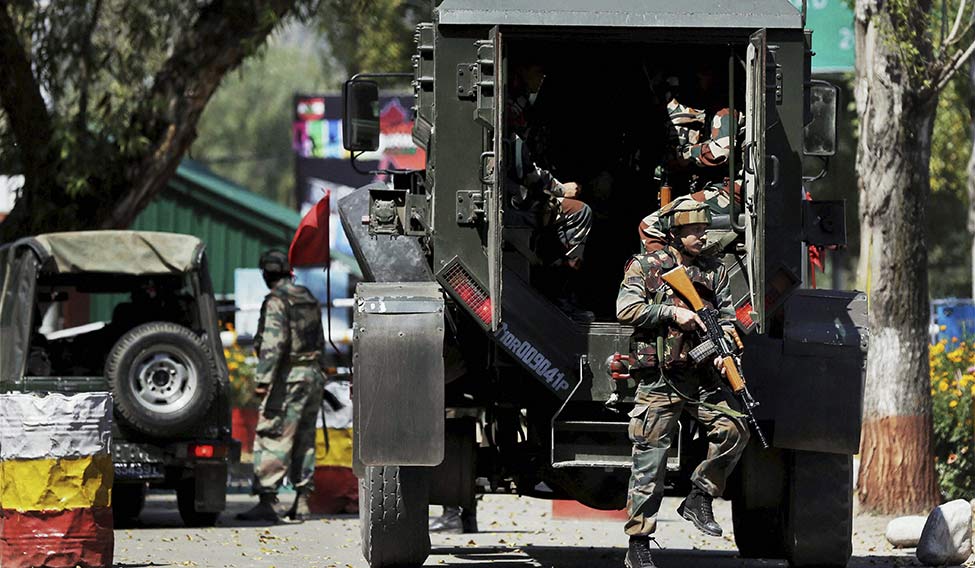At the dawn of September 12, Mumtaz Nazir woke up to say namaz, as was her routine. Her husband, Haji Nazir Mir, 72, a respected businessman and cousin of the noted politician Haji Jehangir Hussain, was still asleep. The elderly couple lived in a mansion close to the Army’s 93 Brigade at Alla Peer in Poonch district.
As Mumtaz opened the door to the kitchen, she saw a man in battle fatigues squatting on the floor with his eyes closed. He was clutching an AK-47. She tiptoed back to her room, locked it from inside and woke up Nazir. They were so afraid that they did not dare make noise and alert their domestic help, Tariq and his wife, Tarveen, who were sleeping downstairs.
After a while, Nazir plucked up the courage to phone his friend Krishan Singh. Singh alerted the police, who soon mobilised a team from the Special Operations Group. A contingent of the Army’s 9 Para also flew in. “After sometime, Tariq woke up and went to the kitchen,” said Nazir. “The militant charged at him and fired a shot. The bullet ricocheted off a pillar and hit Tariq in the leg, but he managed to return to his room.”
The gunshot forced the security forces to engage the militants. “I realised that a second militant was hiding in my house,” said Nazir. A heart patient, he wanted to have his medicine and some water, but he was trapped inside his room. “We started to recite Quranic verses,” he said.
The encounter raged on, and two other militants started firing from the mini secretariat that was under construction nearby. The Army called in a contingent of 39 Rashtriya Rifles, which specialised in counterinsurgency. It took 11 hours for the forces to neutralise the four militants and thwart their plan to attack the 93 Brigade headquarters at dawn. “The militants were wearing Army uniforms and were highly trained,” said Johny Williams, deputy inspector-general of police, Poonch.
Five days later, four other fidayeen of the banned Jaish-e-Muhammad breached the high-security fence on the Line of Control near Uri in Baramulla district. Clean-shaven and sporting military-style haircuts, they, too, were dressed in Army uniforms.
Just before dawn the following day, they reached the rear of the administrative unit of the 12 Brigade headquarters in Uri, about 6km from the LoC. The camp housed soldiers belonging to 6 Bihar regiment and a 10 Dogra unit. The 6 Bihar troops had been training to replace 10 Dogra by October and were living in tents.
The militants cut the barbed-wire perimeter fence, sprinkled incendiary material on the tents, threw grenades and began firing. The soldiers were stunned. And trapped. The tents were afire, and bullets were being sprayed on them. A quick reaction team of the Army rushed in and killed three militants within the first 15 minutes of the attack. The fourth one, who had taken position some distance away, was killed hours later.
Thirteen of the 18 soldiers who were martyred, the Army later said, died of third-degree burns. It was one of the deadliest ever attacks on the Army, and it shook the government and the security establishment to the core. Lt Gen Ranbir Singh, director-general of military operations, said in Delhi that four AK-47 rifles, ammunition and grenades and four under-barrel grenade launchers were recovered from the site, along with food and medicine packets that had Pakistani markings. Prime Minister Narendra Modi said those who were behind the attack would not go unpunished. Chief Minister Mehbooba Mufti said the attack was aimed at creating a warlike situation in Jammu and Kashmir.
Infiltration bids have been on the rise since early this year. Two days after the attack on the 12 Brigade headquarters, the Army shot 10 infiltrators near the LoC at Uri and Nowgam sectors, taking the number of militants killed while crossing the LoC this year to 31.

The Uri attack has prompted criticism that the Army was caught napping. Over the fortnight preceding the attack, intelligence agencies had repeatedly warned Air Force stations and Army bases in north India of a terrorist strike.
“For perimeter security, we have standard operating procedures which have to be observed to the T,” former Air Force vice chief R.K. Sharma told THE WEEK. He said the basic security arrangement at any base should be three-tiered, which means enemies have to cross multiple obstacles to reach their target. In Uri, however, the militants encountered no such obstacle. Attacks had taken place in the past during changeover of troops, yet the Army failed to take adequate precautions.
According to Williams, it was possible that the Uri attackers had links to militants killed in Poonch. “I would tend to think so, given that the weapons and other items recovered from the two groups are similar,” he said.
Investigators are probing whether the Uri attackers have links to the Jaish-e-Muhammad militants who attacked the Pathankot air base on January 2. Post Pathankot, Defence Minister Manohar Parrikar had formed a five-member committee under Lt Gen Philip Campose, former vice chief of Army staff, to ascertain the causes behind the security breach and suggest measures to plug gaps. An officer who was part of the committee said that while doing security audit of military stations, it found that some of the Army units were ill prepared to deal with terrorist attacks. Parrikar has now asked the Army Headquarters to inquire into the Uri attack and submit a report.
Security agencies say the militants may have received help from local people. They cite the August 15 encounter near the LoC in Uri, in which the Army killed five suspected terrorists. One of the persons killed was a guide from Uri, who had helped security agencies gather information from Pakistan-occupied Kashmir, where he had relatives. His relatives and friends on the Indian side were employed at the 12 Brigade headquarters. Intelligence personnel say that they might have helped the Uri attackers, as the maps recovered from the militants showed the exact location of the officers’ mess and other facilities inside the camp.
 Brothers in arms: Armymen paying their last respects at the funeral of Sunil Kumar Vidyarthi of 6 Bihar regiment, who was martyred in the Uri attack | AFP
Brothers in arms: Armymen paying their last respects at the funeral of Sunil Kumar Vidyarthi of 6 Bihar regiment, who was martyred in the Uri attack | AFP
The Army has not disclosed where the attackers crossed the LoC. Local people told THE WEEK that the village nearest to the LoC in the region is Sukdar, which is 5km uphill of the brigade headquarters. But the floodlights, sensors and layers of concertina wire laid by the forces make it a difficult terrain for infiltrators.
There is a possibility of militants having reached Uri through some other route. But then, Uri has not harboured militants since 1990. Ringed by mountains on all sides, the bowl-shaped valley has never been a preferred route for infiltrators, as most of its 1,00,000 residents maintain cordial relations with the Army.
When THE WEEK reached Uri a few hours after the attack, a group of young men were squatting outside a toll gate in the town, watching television journalists at work. Some of the men said they mistook the loud explosion they heard before dawn for shelling from Pakistan.
Uri had been pounded by Pakistani shelling until 2003, when India and Pakistan signed a ceasefire agreement. With peace prevailing, Uri became a transit point for cross-LoC trade, thanks to the bus service that connects divided families.
The toll gate has now been closed, and barricades have been erected. On either side of the road were two signboards, which said ‘closed’. In between stood three oil drums painted white, yellow and pink. A few yards behind lay the gates to the brigade headquarters, also called Kala Pahar (black mountain). The top of a green billboard read ‘khusamdeed [welcome]’. Below it was written: Muzaffarabad, 70km. (Muzaffarabad is the capital of PoK.)
There is talk, though unconfirmed, that India has started counter-operations in PoK involving the 9 Para (Special Forces) unit. For now, an uneasy calm prevails in Uri. Despite the attack on Kala Pahar, a bus carrying people who had relatives in PoK was allowed to cross the LoC on September 20. The bodies of the four militants were handed over to local people for burial after postmortem.
Near the toll gate was a tea stall in an open strip overlooking the river Jhelum. The dominant chatter was the attack on Kala Pahar. A few reporters came into the stall, and the chatter turned to whispers and then silence.
“We don’t know who attacked the camp, but we are sad,’’ a man said when THE WEEK broached the subject that was on everyone’s mind. “Many people earn their daily bread from the Army. I don’t think anybody would help the attackers.”
It is certain that the Uri attack will worsen the situation in Kashmir. Separatists see it as payback on behalf of more than 80 civilians who died and thousands who were injured in clashes with security forces. There are, however, people like Suhail Bukhari, media adviser to Mehbooba, who know what the real effect of the attack would be.“Irrespective of who perpetrates it,” he said, “the violence will only bring misery to the people of Jammu and Kashmir.”
WITH AJIT K. DUBEY






